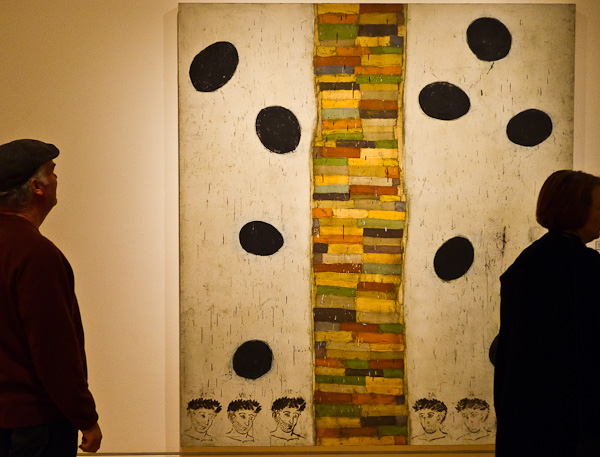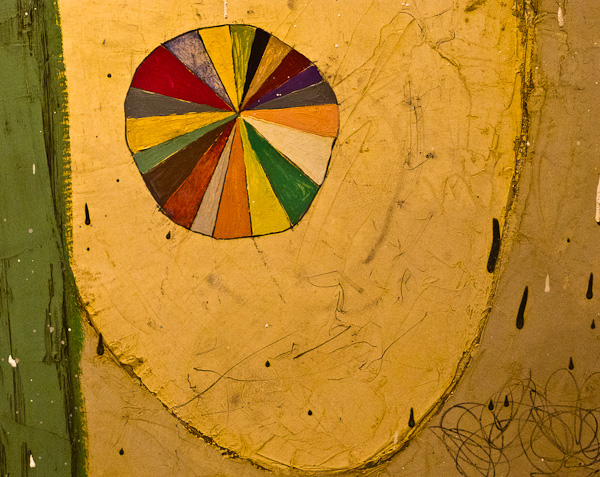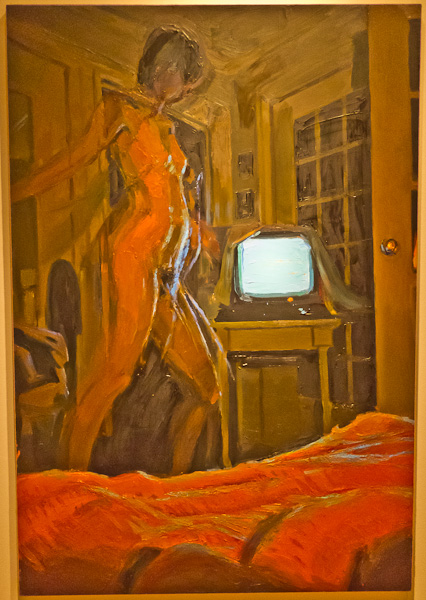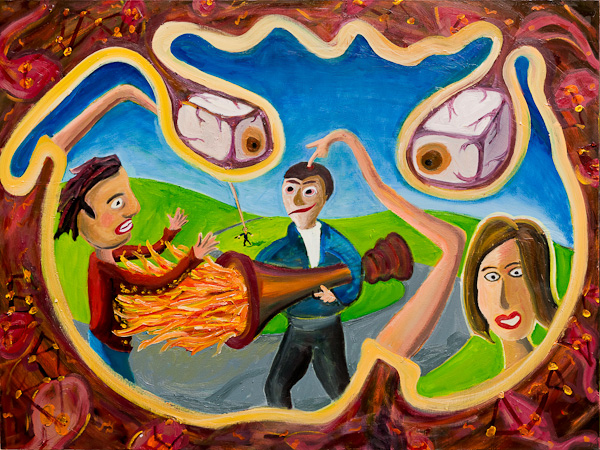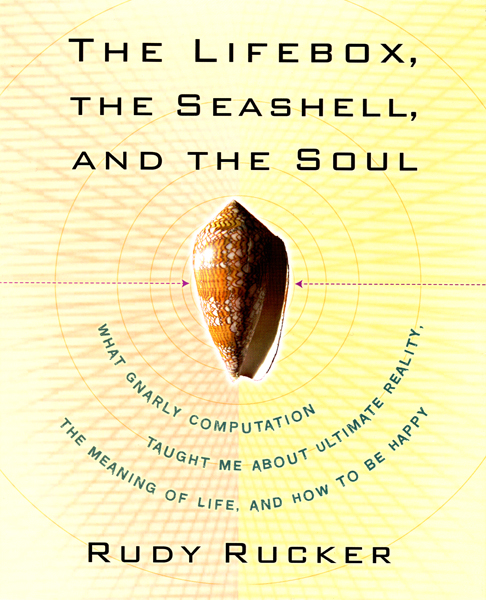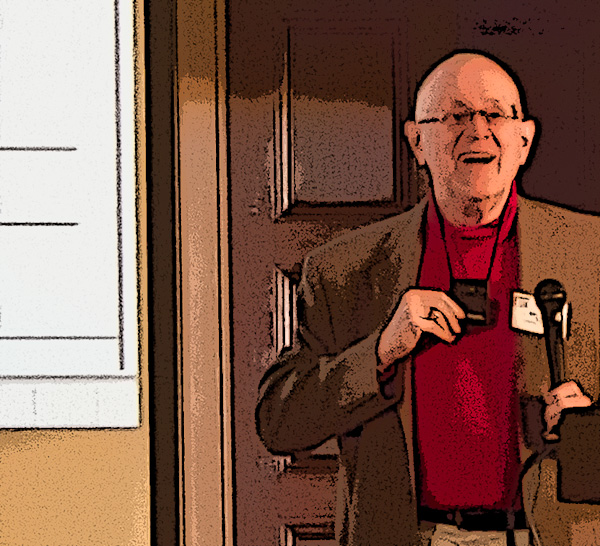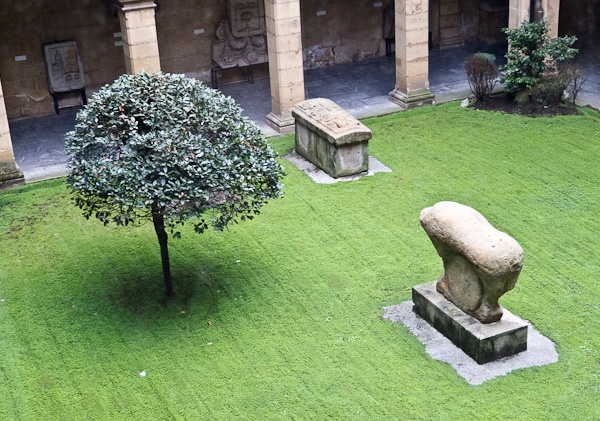So now I’ll post the rest of my photos from Spain. Today’s pictures are from San Sebastian, a Basque-country resort town on the Spanish coast, a few miles south of the better-known resort Biarritz, in France.

San Sebastian is said to have the best tapas, or pintxos, bars in Spain. You take, or ask for, whatever you want from the platters on the bar, and somehow the waiters keep track of your tab. The stuff can be really great—with toppings like octopus, ham, anchovy, hake, shrimp, cheese, and the like. You do have to a bit wary, as the less-good places will have some tapas loaded with things like coleslaw or tuna salad. The place in this picture was in fact my favorite place, on the Calle Mayor in San Sebastian, I don’t remember the name. Totally jumping in there at 9 pm. Here’s a guide to San Sebastian tapas, but basically you just look for the places where the crowd fills the room.

A lot of the snacks include a special jamón ibérico or Iberian ham, which is very nearly unobtainable in the US. A whole ham sells for about 90 Euros, and they still have the original pig trotter intact at the top. Ideally the black Iberian pigs have fed primarily on acorns. I was kind of wondering if I might be able to smuggle one of the hams home inside my pants, taped to my leg. “Yes, I have a trotter on my knee—so?”

There’s a beautiful old square in the old part of San Sebastian, the Constitution plaza. The windows have numbers painted over them—at one time they used the square as a bull-fighting ring, and sold the window seats. The Constitution plaza is one of those lovely European hanging-out zones. People of every age sit in the cafes, chatting and relaxing. School children play soccer. Mothers with baby carriages exchange gossip.

And on Sunday, some local musicians play in one of the arcades around the plaza. I love the toddler on the bottom right, staring at the band. The tyke even danced a little. It’s amazing to me how, as soon as a child can stand, they have the idea of bouncing in rhythm and waving their arms.

San Sebastian sits on a round little bay, shielded from the most violent weather. The waves break in beautiful circular arc that runs around the whole bay. The beach is very gently sloping, which means that the tides move the waterline up and down by several hundred feet a day.

At my talk in Bilbao, I met an American artist, Lawrence S. Johnson, who lives in San Sebastian with a local woman whom he befriended while on a month-long 500-mile pilgrimage hike. Larry has read many of my books, found out about the talk via one of my tweets, and turned up. We spent a while day with Larry and his lady friend, it was great.

When we started walking, it was raining, but in a fairly mild, pleasant way. Larry and I walked on the wet sand and the ladies walked on the seaside promenade. I liked these cool layers of rock, turned at an angle.

At the end of the beaches along the bay we came to three iron sculptures, embedded into the rocks to make a piece called El Peine Del Viento, or The Comb Of The Wind, by the Basque sculptor Eduardo Chillida.

And then we rode a 1912 funicular train a few hundred meters to on overlooking promontory. The control room for the train was a little bit unsettling—like the lab in the original movie of Frankenstein
.

Atop the promontory was a nearly inactive (as it was February) amusement park for kids, a fairly low-tech set up. I dug the entrance to the Casa Del Terror, or House Of Horror. I’ve always been very frightened of those places, and haven’t been in one since I was a kid.

I was surprised to see a fortune-telling machine modeled on a famous sculpture in Rome, the Boca de Verita, or Mouth of Truth. The story goes that if you put your hand inside the slot like mouth and say something, the stone won’t let you remove your hand if what you said wasn’t true. I actually wrote about this in my book Infinity and the Mind, years ago. My paradoxical thought was to put my hand into the mouth and say, “I will not be able to remove my hand,” getting a statement that’s true if and only if it’s false.
And in this off-the-grid kiddie park, there was my old friend the Boca, jammed in with Aladdin.

We slept in an old place called the Hotel Niza, with a nice view of the bay. On Friday night, there was a fair amount of noise from young people partying on the beach—they only partied on Friday, not on Thursday or Saturday. But on Friday they were up until four or five am.

The bay was amazing at night, with the beautiful lights reflecting off it. When we’d go out for supper at about 9 pm, we’d walk along the bay to the old town. This photo reminds me a little of a Van Gogh painting we saw at a show in San Francisco this winter.

In the mornings and again in the early evening, hundreds of people promenaded along the path by the beach. The trimmed trees look kind of like sea creatures here.

In the early morning, fanatical locals would change into their suits at a bathing-club downstairs and head into the surf.

A beautiful old carousel by the beach was decorated with paintings taken from the masterpieces of art—how European.

And then our week was over, and we made our way back home via the Serra sculpture in Bilbao.
